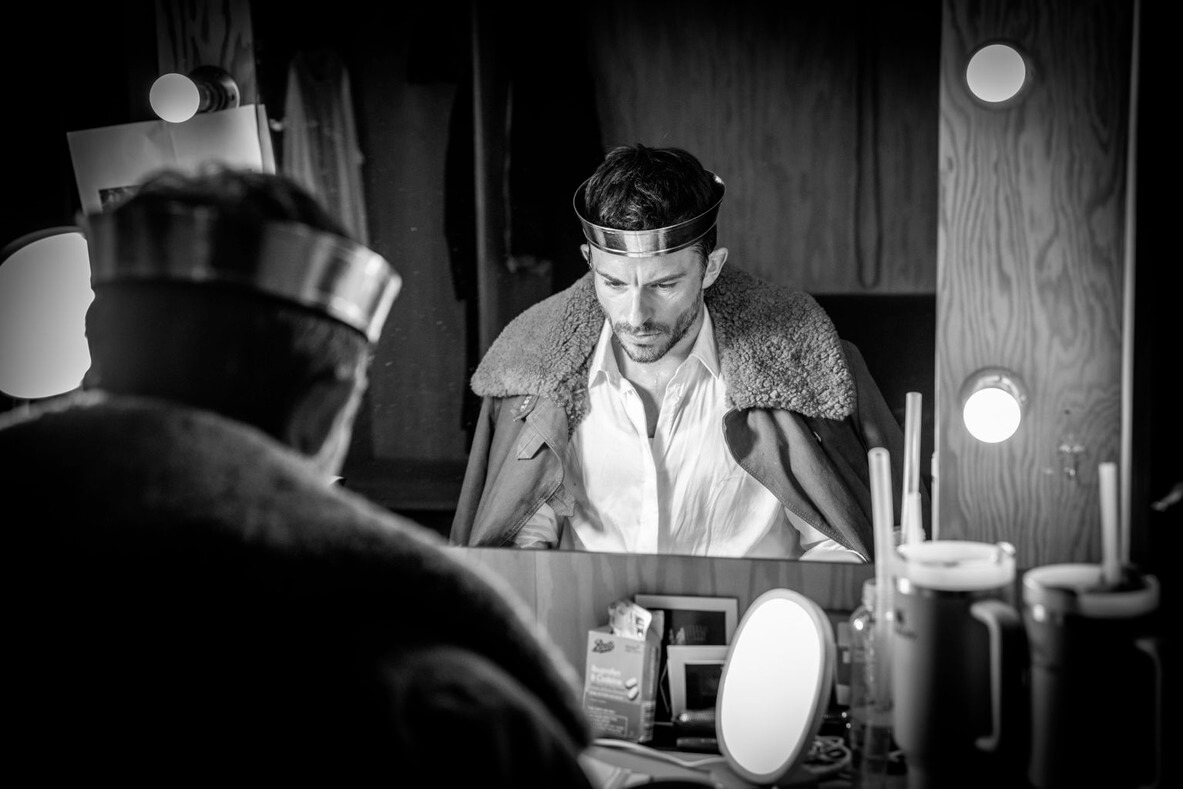The star of this show is the production design. Fans of the book will be familiar with the look and feel of the Gaiman-verse, and set designer Fly Davis captures it brilliantly onstage. The tree-like background set and the use of moving doors were especially effective. Director Katy Rudd employs a more-is-more approach to the stage effects, which include strobe lights, flight, various types of puppet, and an underwater sequence. The overall result is perhaps a bit much, though they're impressive as individual effects.
It isn't always abundantly clear what's going on in The Ocean At The End Of The Lane's plot, though the main story is sparked by the unexpected death of a man in 1980s Sussex. Our unnamed hero is a geeky, motherless 12-year-old (James Bamford), whose family rented their spare room to the dead man. It's an exhausting performance- Bamford is in every scene of the 140-minute play, and spends much of it writhing on the floor or being tossed through the air. It's not a criticism to point out how much Bamford channels Anthony Boyle's Olivier-winning Scorpius Malfoy from Harry Potter and the Cursed Child. Bamford's Scorpius-like jitters and rambles make his character an intriguing and endearing protagonist. Aimlessly wandering while the adults deal with the sudden tragedy, Bamford's character meets Lettie Hempstock (Nia Towle) a girl who looks his own age but possesses ancient knowledge and otherworldly powers. Lettie lives with her mother and grandmother, and the interactions between the three generations of West Country manic pixie dream girls are some of the best scenes in the play.
Magical escapades ensue, involving giant flees, memory editing, “hunger birds”, and an unearthly housekeeper played with sinister relish by Laura Rogers. Horwood keeps in many of the best lines in the book, and manages to insert some jokes in too. Grace Hogg-Robinson drew plenty of laughs through her shrill performance as Bamford's sister (“She's made burger and chips!” she gushes about the new housekeeper, “It's like Wimpy!”), and Lettie's grandmother, played by Penny Layden, has an amusingly blunt turn of phrase. It's refreshing to see a fantasy story with so many female characters, though they're not all well-developed due to the plot's focus on supernatural shenanigans. Both the set and the story of this play are dark and, some parts may be too disturbing for younger audiences.
For Gaiman fans, The Ocean At The End Of The Lane is a must-see for its capturing of the source material and the author's tone. If you're interested in set design and stage spectacle, you'll find plenty to love here. And it's a thrilling night out for anybody looking for a mystical, original and thought-provoking theatrical experience.

 Memory, family, reality, storytelling, grief, magic, language- there's plenty of themes in Joel Horwood's adaptation of Neil Gaiman's 2013 novel.
Memory, family, reality, storytelling, grief, magic, language- there's plenty of themes in Joel Horwood's adaptation of Neil Gaiman's 2013 novel. 



 What happens when you mix a group of aristocratically entitled young men with those of a more socially conscious outlook at an esteemed and exclusive educational establishment? Into Battle recounts the trials and tribulations of the 1910 attendees of Balliol College Oxford, before and during the horrors of World War I.
What happens when you mix a group of aristocratically entitled young men with those of a more socially conscious outlook at an esteemed and exclusive educational establishment? Into Battle recounts the trials and tribulations of the 1910 attendees of Balliol College Oxford, before and during the horrors of World War I.